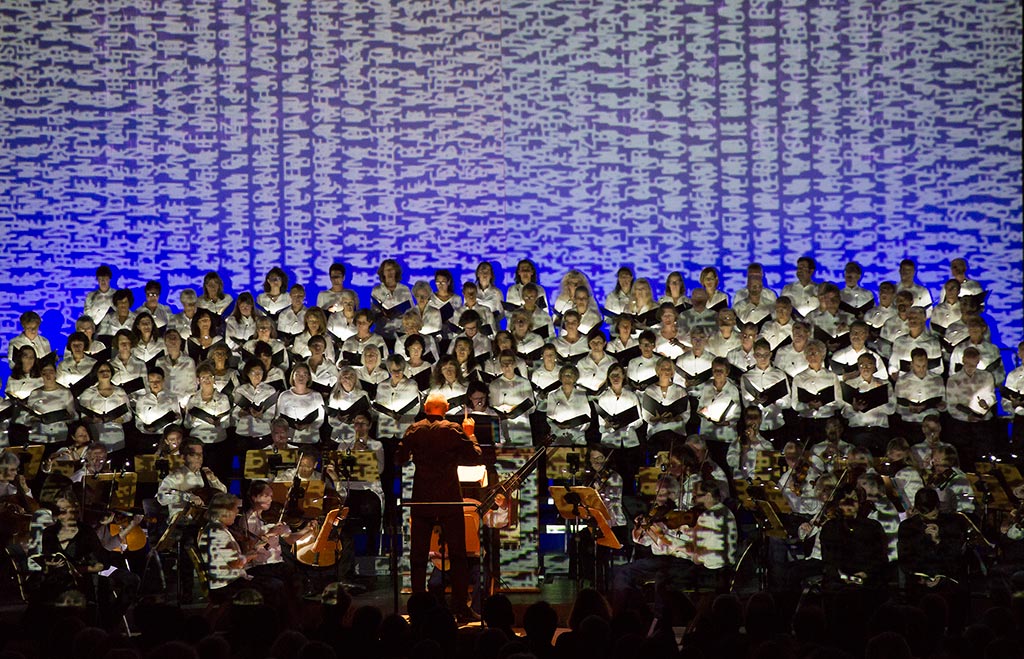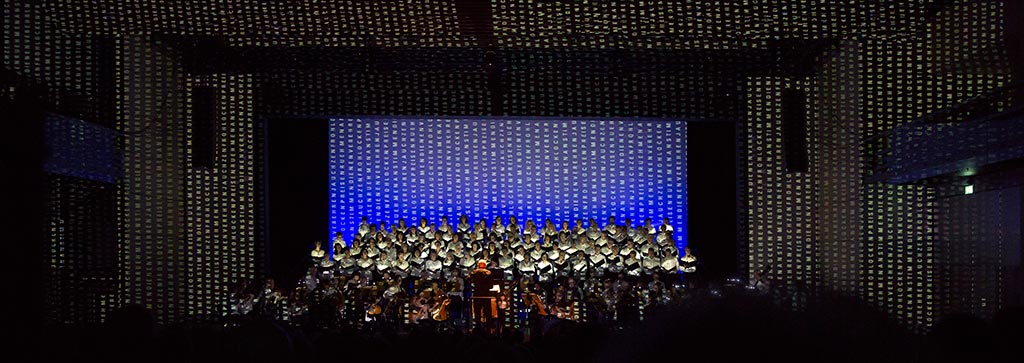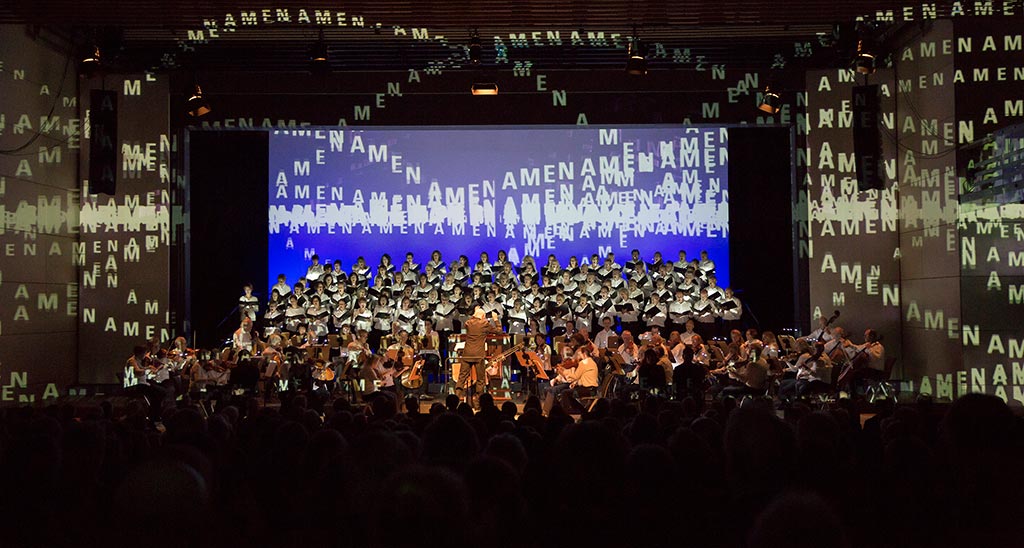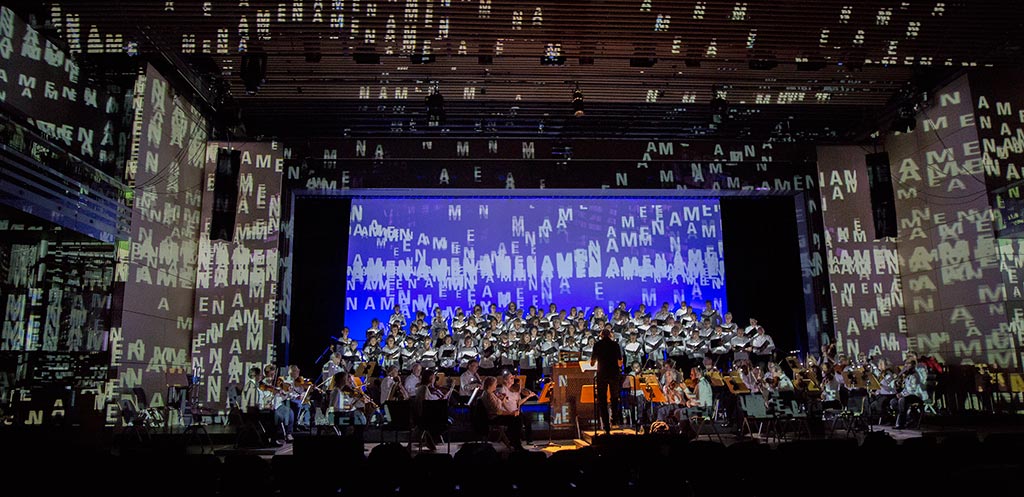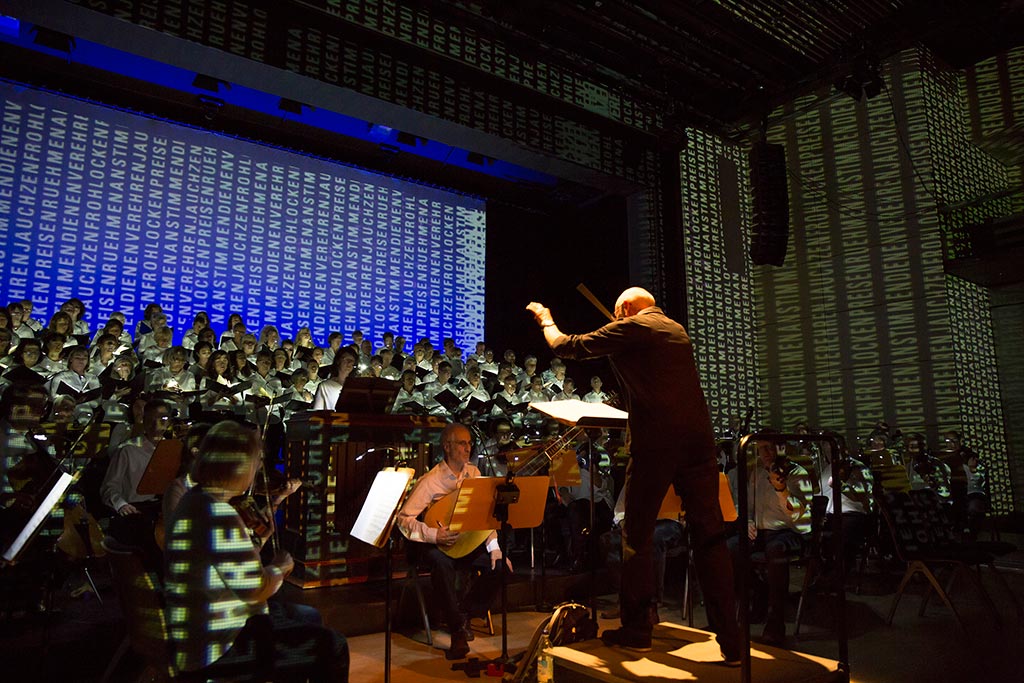MAGNIFICAT
Concert with Bachorchester Fürstenfeldbruck, Stadtsaal Fürstenfeld, Fürstenfeldbruck
For the performance of the Bachorchester in the Stadtsaal Fürstenfeld, individual sequences of the concert are visually accompanied by static or animated light–text projections. The text material comes from the Magnificat itself, or associated interpretations of the hymn.
 “Mary's Song of Praise” (Lk 1, 46–55) is one of the most frequently interpreted and received biblical texts. It is only included in Luke’s gospel who is the most interested between the evangelists for the excluded people. Many of the interpretations particularly emphasize the “revolutionary” aspect of the song, which states, “It brings down the powerful from the throne and raises the low ones.”
For example, Dietrich Bonhoeffer writes about the Magnificat:
“This song of Mary is the most passionate, wildest, yes one would almost say revolutionary song that has ever been sung. It is not the gentle, tender, dreamy Mary, as we see her in pictures, but it is the passionate, enthralled, proud, enthusiastic Mary who speaks here ... a harsh, strong, relentless song of tumbling thrones and humbled lords of this world, of God's power and of people's powerlessness. ” (1)
In liberation theology and in feminist theology, the Magnificat plays an important role.
Georg Trenz and Detlef Hartung use the power of images and words in the viewer, in this case also in the listener, to associate their own individual picture and language world with the concert visitor.
(1) quote in: Hartmut Handt, Armin Jetter, Voller Freude. Liedandachten zu den Sonntagen und Festen des Kirchenjahres. Strube Edition 9044, München 2004, 1. Auflage, ISBN 3–89912–071–X, S. 20. source: Wikipedia
